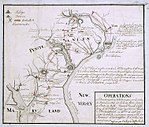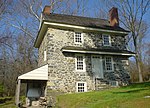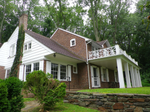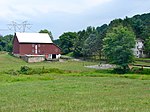Brandywine Museum of Art
1971 establishments in PennsylvaniaAndrew WyethArt museums and galleries in PennsylvaniaArt museums established in 1971Brandywine Museums & Gardens Alliance ... and 5 more
Chadds Ford Township, PennsylvaniaInstitutions accredited by the American Alliance of MuseumsMuseums in Delaware County, PennsylvaniaMuseums of American artWyeth family

The Brandywine Museum of Art is a museum of regional and American art located on U.S. Route 1 in Chadds Ford, Pennsylvania on the banks of the Brandywine Creek. The museum showcases the work of Andrew Wyeth, a major American realist painter, and his family: his father N.C. Wyeth, illustrator of many children's classics; his sister Ann Wyeth McCoy, a composer and painter; and his son Jamie Wyeth, a contemporary American realist painter.
Excerpt from the Wikipedia article Brandywine Museum of Art (License: CC BY-SA 3.0, Authors, Images).Brandywine Museum of Art
Hoffmans Mill Road, Chadds Ford Township
Geographical coordinates (GPS) Address Phone number Website External links Nearby Places Show on map
Geographical coordinates (GPS)
| Latitude | Longitude |
|---|---|
| N 39.8699 ° | E -75.593 ° |
Address
Brandywine River Museum
Hoffmans Mill Road 1
19317 Chadds Ford Township
Pennsylvania, United States
Open on Google Maps








